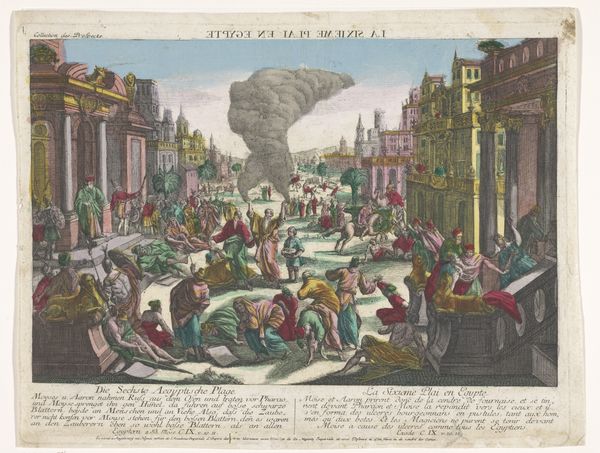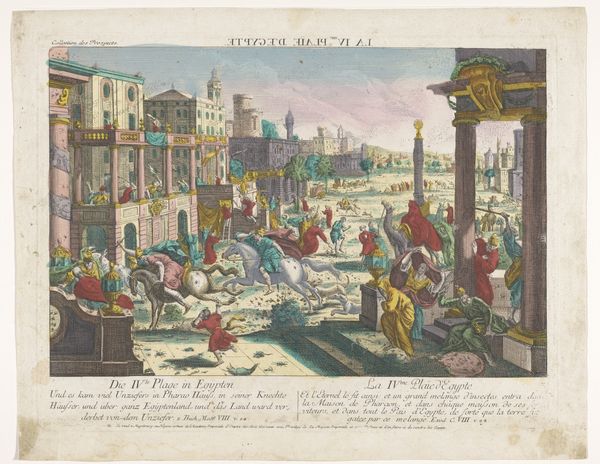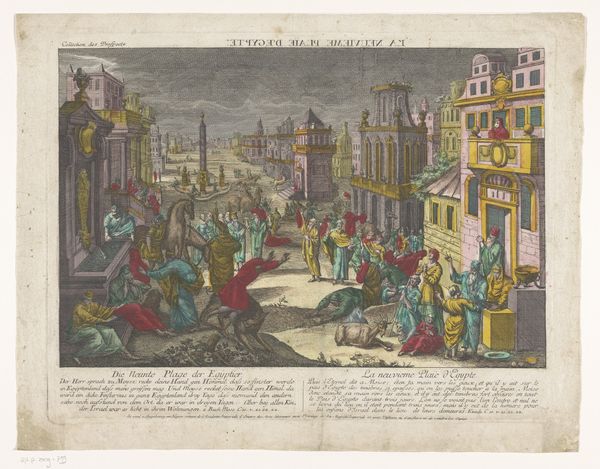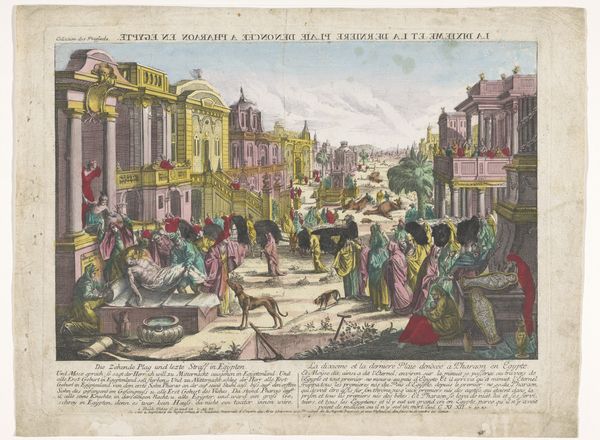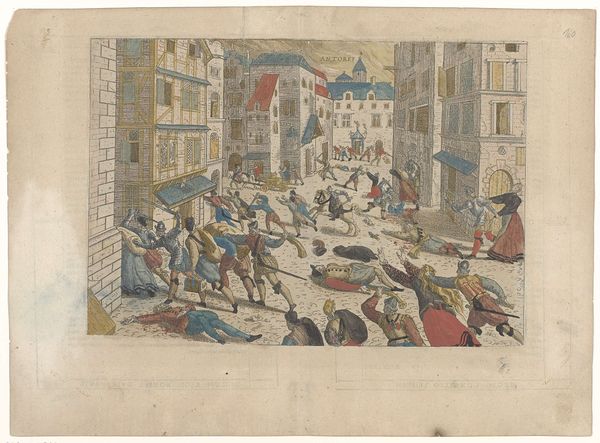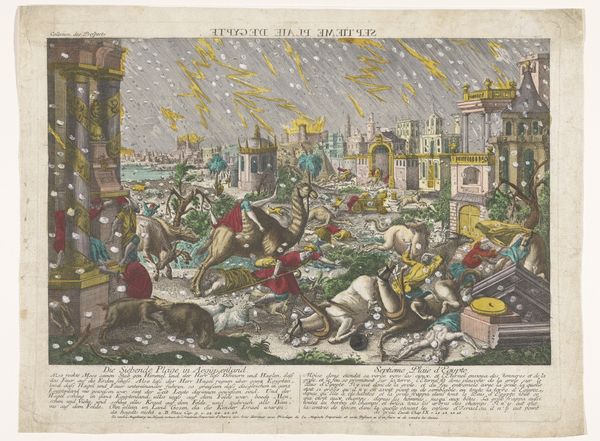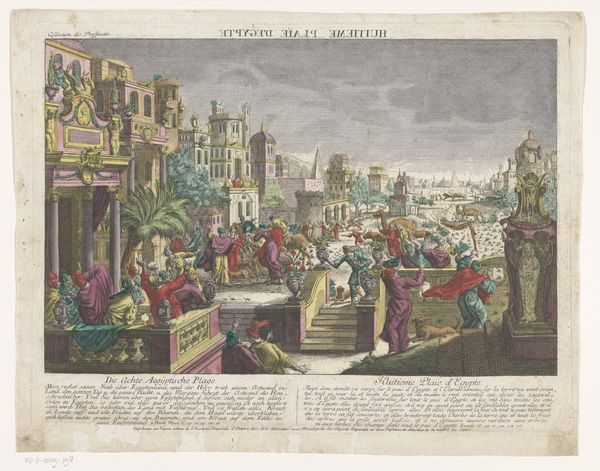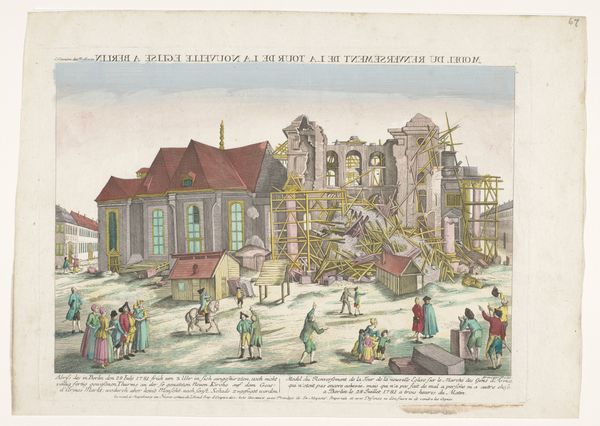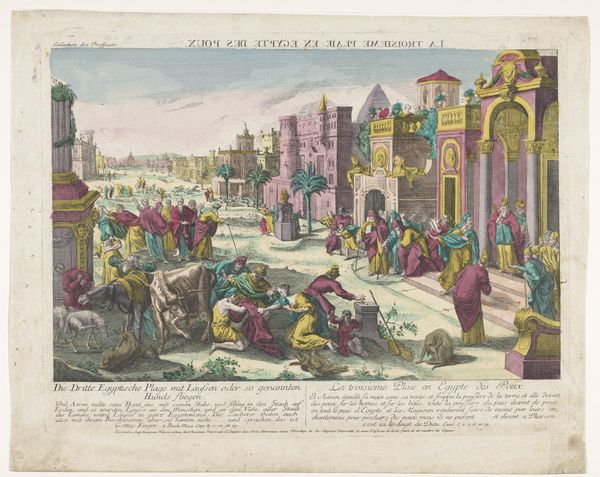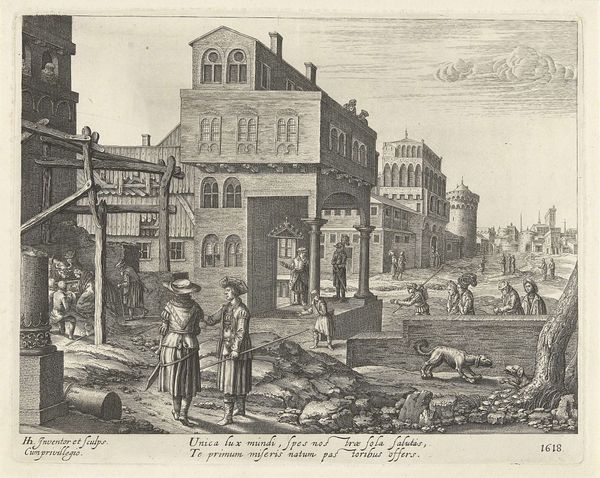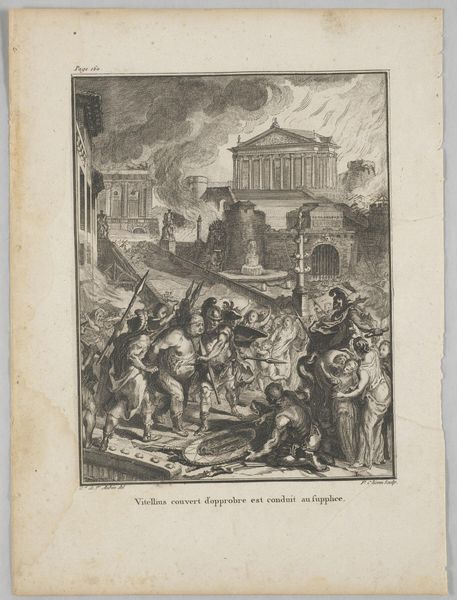
drawing, print, watercolor, engraving
#
drawing
#
water colours
#
narrative-art
# print
#
watercolor
#
coloured pencil
#
history-painting
#
engraving
#
watercolor
Dimensions: height 335 mm, width 435 mm
Copyright: Rijks Museum: Open Domain
Curator: Let's consider this print, "The Destruction of Jerusalem," made sometime between 1755 and 1779. It combines engraving, watercolor, and what looks like colored pencil. A chaotic scene of war and fire really dominates. What jumps out at you initially? Editor: The layered effect is pretty striking. It almost feels staged, even though the subject matter is quite violent. The city feels more like a set piece and the application of colour almost industrial – a flat, economic wash. What does that choice tell us about the artist's goals and the intended audience? Curator: Excellent observation! Notice the means of production: engraving, printmaking, watercoloring – these are repeatable processes, relatively efficient for distributing images and information, which highlights the print’s social role. Its purpose lies perhaps less in ‘artistic expression,’ but rather in delivering specific cultural or moral ideas through widely available images. Think about who could afford such a print. Editor: So, this isn't necessarily meant to be high art consumed by the elite. It's speaking to the growing middle class who want to be educated and morally instructed. Does that explain why the violence is somewhat stylized or softened? Curator: Precisely! And let’s delve deeper into the ‘destruction’ itself. Consider the labor involved, the cost of materials for printmaking at that time, the social impact of spreading these images that, as you noted, make the fall of Jerusalem almost palatable. Were there other similar images? What might these represent to its intended contemporary audience? Editor: So, by analyzing its production, the choice of readily available materials, and the distribution potential, we can better understand its social purpose. I hadn’t considered the artistic merit coming from that aspect before. Thanks for providing a different lens for observation. Curator: Absolutely. Looking at art through a materialist perspective opens up new questions regarding labor and social context often missed. It moves beyond the question of aesthetic expression, emphasizing instead what its creation tells us about that era.
Comments
No comments
Be the first to comment and join the conversation on the ultimate creative platform.
